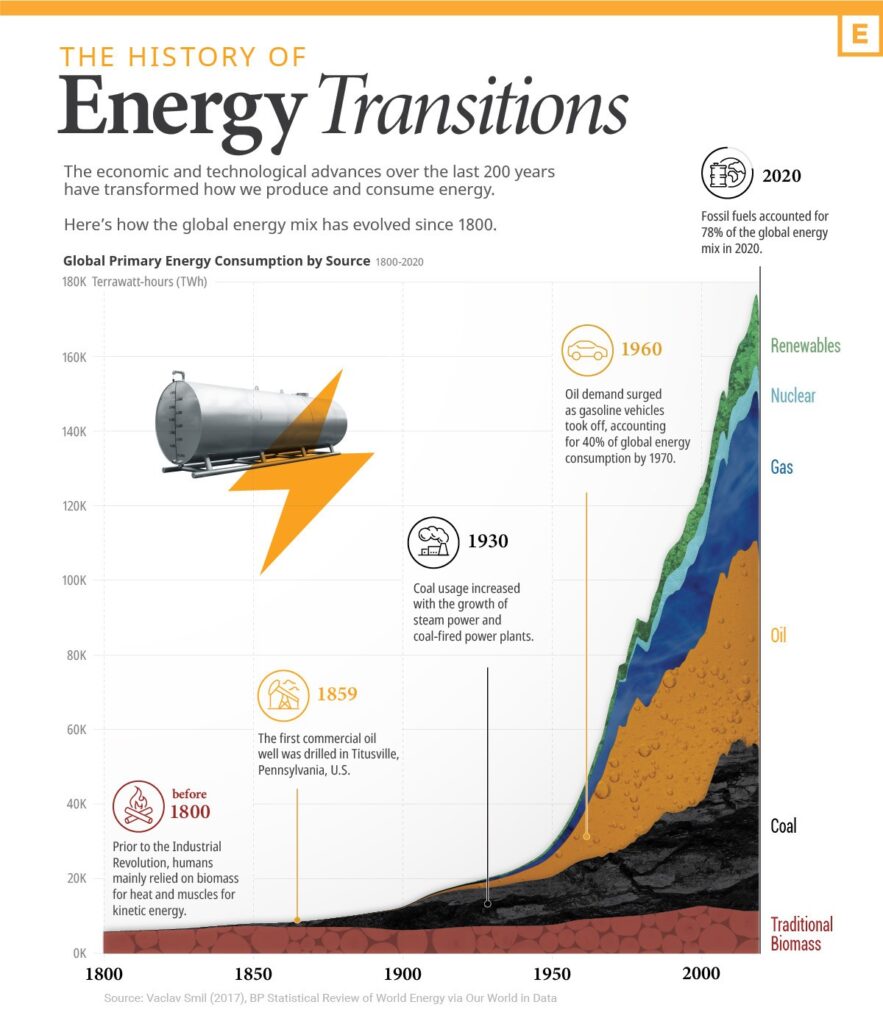In recent years, technology has begun to disrupt nearly every industry. Technology is changing how we do business, from ride-sharing apps like Uber and Lyft to online retail giants like Amazon. Now, the energy industry is beginning to feel the effects of this disruption.
Potential energy solutions are evolving rapidly as a result of this technological progress. Furthermore, their quest for carbon neutrality is further accelerating this disruption. Solar panels are becoming more efficient and affordable, while battery storage solutions allow electricity storage for later use. These developments could have a major impact on the way we produce and consume energy. We could see a reduction in our reliance on fossil fuels, cleaner air, and lower energy bills. However, there are also risks associated with this change that must be considered.
As with any major technological shift, there will be winners and losers. Those who adapt quickly may take advantage of this new opportunity and modernize outdated product portfolios and operating practices. At the same time, those who are slow to react may find themselves left behind. It will be important for businesses and individuals alike to stay up-to-date on these changes to stay caught up.
History of the Energy Industry
The energy industry has a long and complicated history. The first use of energy was for transportation and agricultural production, followed by the industrial revolution, which saw widespread use of energy for manufacturing and other purposes. Here’s a glimpse into the evolution of energy.

The renewable energy industry is a relatively new industry that is increasing. These energy sources, such as solar, wind, and hydropower, are environmentally friendly and have become increasingly popular in recent years.
Let’s see how cloud computing is changing the face of the energy industry in the coming years:
In 2023, cloud computing will profoundly impact the energy industry. By then, the industry will be fully digitized and automated, with real-time data collection and analysis driving all decision-making. The benefits of cloud computing will include reduced costs, increased efficiency, and improved transparency and security.
- Efficient and sustainable data storage: By 2040, data centers will account for more than 14% of global GHG emissions. Because data centers operate 24 hours a day, seven days a week, they require massive electricity to run and keep the servers cool. Cooling the servers and IT equipment consumes more than 40% of overall electricity consumption in data centers. According to a joint study conducted by Accenture, Microsoft Corporation, and WSP Global Inc., cloud computing can dramatically cut GHG emissions. According to the report, major organizations may lower per-user carbon footprint by 30%, while SMBs can reduce per-user carbon footprint by up to 90%. It is becoming more common for energy enterprises to commit to net-zero emissions by 2050, which the cloud can enable.
Did you know? By 2030, Microsoft will be carbon-negative. All the carbon emissions the company has produced directly or through energy use since 1975 will be removed from the environment by 2050.
- Cloud security: The cloud security market in the energy sector is estimated to grow at an 11.2% CAGR during the forecast period (2021 – 2026). In the projected period, the market will be driven by the increased usage of IoT in the supply chain. As a result of the growing use of IoT and automation, a complex and interconnected value chain, and constant data exchange, the energy sector is vulnerable to cyberattacks.
- The AI and ML-powered energy industry: According to Technavio’s most recent market research report, researchers expect the global artificial intelligence in the energy market to develop at a CAGR of more than 49%. AI-as-a-service (AIaaS) is gaining popularity because it allows consumers and businesses to utilize AI for various applications without a huge initial investment and with a decreased chance of failure. AIaaS can enable energy businesses to test various machine learning algorithms on samples of multiple public cloud platforms. Companies like Alphabet, IBM, and GENERAL ELECTRIC are substantially investing in developing prediction and maintenance systems for the energy industry, with plans to deploy these systems on the cloud soon.
How is Microsoft AZURE transforming the energy industry?
Azure tools and services are leveraged globally by companies from various industries to build custom solutions that aid their digital transformation journey. Microsoft Azure helps optimize the customer experience, modernize workflows, improve operational efficiencies, and reduce costs. Azure for the Energy industry helps build customized and innovative cloud solutions to tackle their digital challenges and prepare for the future. Let’s dig deeper into the topic and see how Microsoft Azure is helping the Energy industry with this transformation:
- High-performance computing (HPC): Azure HPC cloud solution is a fully managed system that helps the customer in the Energy segment visualize reservoir simulations to increase drilling hit rates and form making informed decisions.
- Advanced analytics for better decision making: Azure cloud analytics solution helps improve time to insights for better decision-making and reservoir production using IoT drilling sensors and advanced analytics.
- Predictive maintenance: Azure IoT solution accelerators help manage and extend the asset life cycles with the help of predictive analytics that detects future downtimes and plans maintenance activities accordingly.
- Digital model of the environment: Azure digital twins solution helps in creating a comprehensive digital model of the entire environment for extracting better insights to drive customer experience, optimize costs, and improve efficiencies
Case Study: Azure’s impact on the energy industry
British Petroleum employs digital twins in its Net Zero transformation.
People and the environment are at the heart of British Petroleum’s mission. Furthermore, it is committed to sustainability goals such as achieving net zero carbon emissions by 2050.
The first use case was chosen as the Clair Ridge oil and gas plant in the Atlantic margin west of Shetland. The Clair Ridge facility’s digital twin was created to calculate the facility’s real-time carbon intensity and energy efficiency. The ultimate goal is to build carbon-conscious operations worldwide in all bp’s* manufacturing plants. Microsoft Azure’s security and scalability are ideal for a project of this magnitude. The IoT Hub receives over 250 billion data signals from bp’s* operating assets worldwide every month. With the long-term goal of expanding this digital twin across all of bp’s* global sites, security and scalability are critical.
“By using this digital twin to look at both past data and predict future data, it’s invaluable… If this was rolled out across bp assets, we could reduce emissions by around 500,000 tonnes of CO2 equivalent yearly. ” – David Boyd: Facilities Process Engineer, British Petroleum.
Click here to learn more about the case study.
Zero cost migrations into Azure
Microsoft’s Azure File Migration Program has made data migration easier to Azure by sponsoring the usage of Data Dynamics’ StorageX. The Azure File Migration Program allows companies to migrate applications and workloads with large numbers of files, unstructured data, and object storage data into Azure for FREE.
This case study explores how Data Dynamics utilized the Azure File Migration Program to help a Fortune 50 energy company reduce enterprise carbon emissions with intelligent cloud adoption. They migrated 600 TBs of data in 20 days, achieved a 35% reduction in operational emissions, and grew their low-carbon energy projects by 400%.
Click here to learn about zero-cost migrations into Azure, or contact us at solutions@datdyn.com I (713)-491-4298.






